M2KB #7: Metro & Mussels
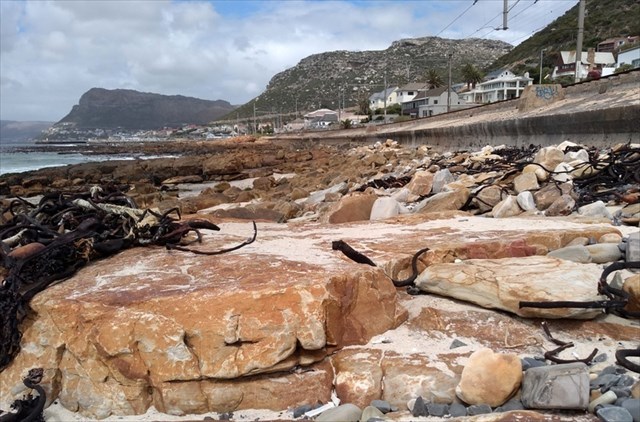
This is the 7th of a series of 10 caches on a wonderful coastal walk along the False Bay coast from Muizenberg to Kalk Bay (M2KB) - or vice-versa. The easiest way to do the whole series is to park at or near either station and get the train back from the other end (see train times here).
Otherwise the caches can be done in groups from and back to a convenient starting/parking place, or individually – several as park ‘n’ grabs.
The caches in the series are:
GC82N4H M2KB #1: Bailey's Cottage Short Multi
GC8349F M2KB #2: St James Walkway - Subway
GC8349J M2KB #3: St James Walkway - The Spring
GC8349J M2KB #4: St James Walkway - Ferocious Bush
GC8349K M2KB #5: St James Beach Short Multi
GC8349M M2KB #6: Danger Beach
GC8349Q M2KB #7: Metro and Mussels
GC8349V M2KB #8: Dalebrook Short Multi
GC8349W M2KB #9: The Old Tea Room?!
GC8349Z M2KB #10: Kalk Bay Short Multi

The cache, a small screw-capped camo-taped tablet pot, is hidden along this stretch of the coast between Danger Beach and Dalebrook Tidal Pool which doesn’t have a beach at high tides and is just a rocky shore when the tide goes out. Also, there is no walkway, so you will have to make your way along the wide stone shelf adjacent to the rail tracks.
***If with young children, please keep a close eye on them because of passing trains and the drop off the shelf to the rocky beach***
To reach the cache location:
a) If doing as a continuation of this series of coastal caches: (from the north) carry on south-west along the coast from GC8349M M2KB #6: Danger Beach or (from the south) walk north-easy up the coast from the GC8349V M2KB #8: Dalebrook Short Multi.
b) If doing as a stand-alone cache: park at either of the parking spots for the locations in a) and head down or up the coast respectively to the cache location.
At particularly high tides and with rough seas, waves and/or spray will regularly splash onto the shelf and any passing trains, so it would be good idea to check weather forecasts here and tide-tables here) to ensure that conditions are good – otherwise be prepared to get seriously damp!
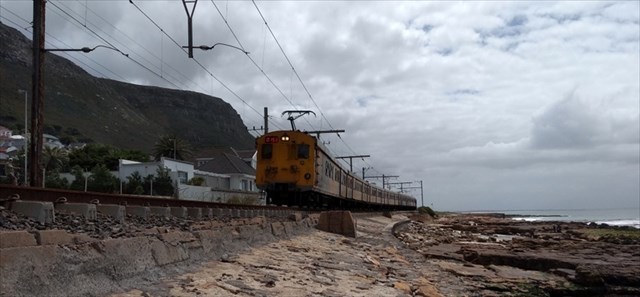
The railway line is the Cape Town Metro Southern Line which dates from 1883 when the Muizenberg-Kalk Bay section was completed. See here for more information on the line.
At low tide numerous rock pools are left on the rocky beach which, together with the sides of the rocks which get covered by the tide, are festooned with mussels. The pools are also home to numerous other forms of sea-life and would keep kids happy and absorbed for hours seeing what could be found and identified.
While exploring the area for a good cache location, I witnessed an interesting incident whereby (at low tide) a person collecting mussels out on the rocks was apprehended by 3 uniformed (beach patrol?) officers on trail bicycles. As this was a prolonged interaction I can only assume that he didn’t have (with him) the required annual Recreational Fishing and Bait Collection Permit which is available from Post Offices.
This would have enabled him to collect 30 mussels ‘by hand or with an implement with a blade or flat edge not exceeding 12mm in length’ and defined quantities of numerous other sea creatures.
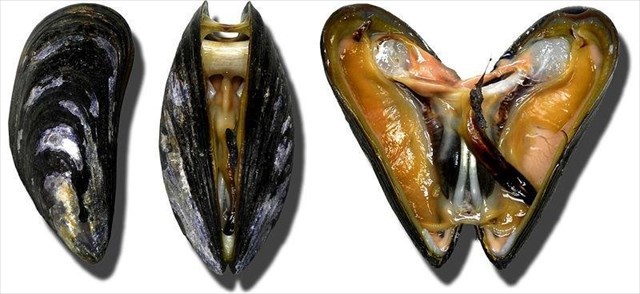 Black, blue, brown and ribbed mussels may be found (especially) at suitable rocky locations along the False Bay coast. However, the blue (or Mediterranean) mussel (Mytilus galloprovincialis) is now the dominant species.
Black, blue, brown and ribbed mussels may be found (especially) at suitable rocky locations along the False Bay coast. However, the blue (or Mediterranean) mussel (Mytilus galloprovincialis) is now the dominant species.
This a species of bivalve, a marine mollusc in the family Mytilidae. It is an invasive species in many parts of the world, and also an object of aquaculture.
It exists as a native species in parts of the Southern Hemisphere. Also, there are populations introduced from the north more recently with human activity. These lineages are distinguished by genetic characters.
No original Mytilus populations lived in southern Africa, but the Mediterranean mussel was introduced from 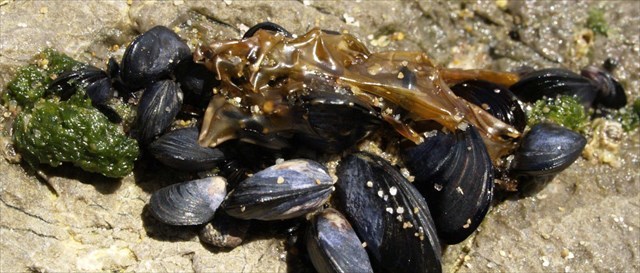 Europe in 1984 and is now the dominant low intertidal mussel on the West Coast. The distribution spans an area from the Namibian border to Port Alfred, intertidally (ie. from high tide level to low tide level) to just below the low tide border.
Europe in 1984 and is now the dominant low intertidal mussel on the West Coast. The distribution spans an area from the Namibian border to Port Alfred, intertidally (ie. from high tide level to low tide level) to just below the low tide border.
It grows up to 140 mm long and is a smooth-shelled mussel with a slightly broader base than that of the black mussel (Choromytilus meridionalis), with which it is often confused in South Africa. Its shell is blue-violet or black, but may shade to light brown.
It is a filter feeder and is rare subtidally (below low tide level to the edge of the continental shelf at about 200m depth – ie. always under water)– another way of distinguishing it from the black mussel in South Africa.
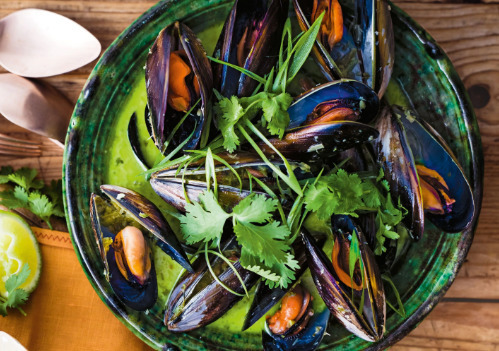 Of course, the reason the guy risked getting/got caught collecting the mussels is that they are a valuable (and renewable) source of healthy food (high protein, low fat, low carb - and with vitamins and minerals – see Galley chart) and . . . taste delicious!
Of course, the reason the guy risked getting/got caught collecting the mussels is that they are a valuable (and renewable) source of healthy food (high protein, low fat, low carb - and with vitamins and minerals – see Galley chart) and . . . taste delicious!
See the short videos Drunken Mussels, here for Hoi Malangpu Ob Samuprai (Thai-style Mussels), here for Peppered Italian-style Mussels and here for Gordon Ramsey’s Mussels with Pancetta and Saffron Flatbread – four completely different recipes for steamed mussels – there are many others! They can also be baked, stewed, grilled, braaied, braised and used in soups and salads. Basically, you could have a different mussel recipe for every day of the year!